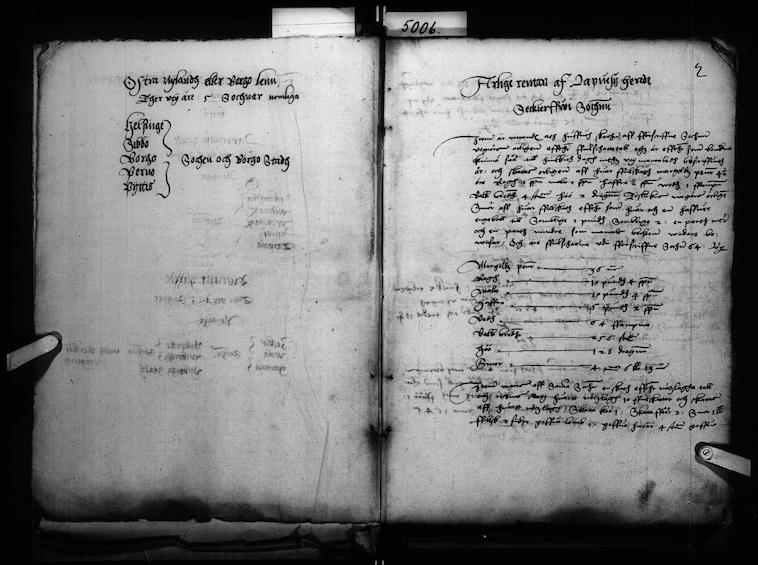Bailiff's Account 1545

National Archives of Finland, http://digi.narc.fi/digi/view.ka?kuid=2661303.
The transcription reads:
Item utgörs aff samma Sochen en skatth effther nöthlagha tallTranslation:
och recknas wtij huartt nötzlagh 10 ffulskattar och skattas
aff huartt nötzlagh Skatta koo 1: skatta ffåår 2: Smor 1
fflesk 2 siidor goffua lomb 1: goffuo harar 4 stycken goffuo
In the same way, the same parish pays one tax according to the number of tax units paying one cow
and ten whole tax units are counted to each tax unit paying one cow and
each tax unit paying one cow pays as tax one tax cow, two tax sheep, one pound of butter
two pig flanks, gift lamb, four gift hares, gift…
This sample document extract is from the bailiffs' accounts of Lappee in the Vyborg castle administration in 1545 and describes the parish taxation for Säkkijärvi and the bases for this. The original document is stored in the Finnish National Archives and a digital copy is available in the digital archive maintained by the National Archives. Joint taxation was still in use in the sixteenth–century Vyborg castle administration. This meant that each taxation unit was jointly responsible for its total tax burden. The smallest unit of taxation was the hearth (lit. smoke; savu/rök) which originally meant one house or household, but later one hearth was taken to mean more than one house. A few hearths constituted a full taxation unit (fulskatt) which was ordered to pay the amount of different taxes. The next tax unit which was made up of several full taxation units was the bovine (nautakunta/nötslag). It got its name from the fact that each unit was jointly liable to pay a tax of one cow. The next taxation unit was made up of several bovines, the farthing (neljänneskunta/fjärding), which originally meant a quarter of the parish, but in the sixteenth century a parish may have consisted of more than four farthings. After the farthing, the next taxable unit was a parish (pitäjä/socken). Parish tax collection was done by a sheriff (nimismies/länsman) who accounted for the taxes to the bailiwick (vouti/fogde).
